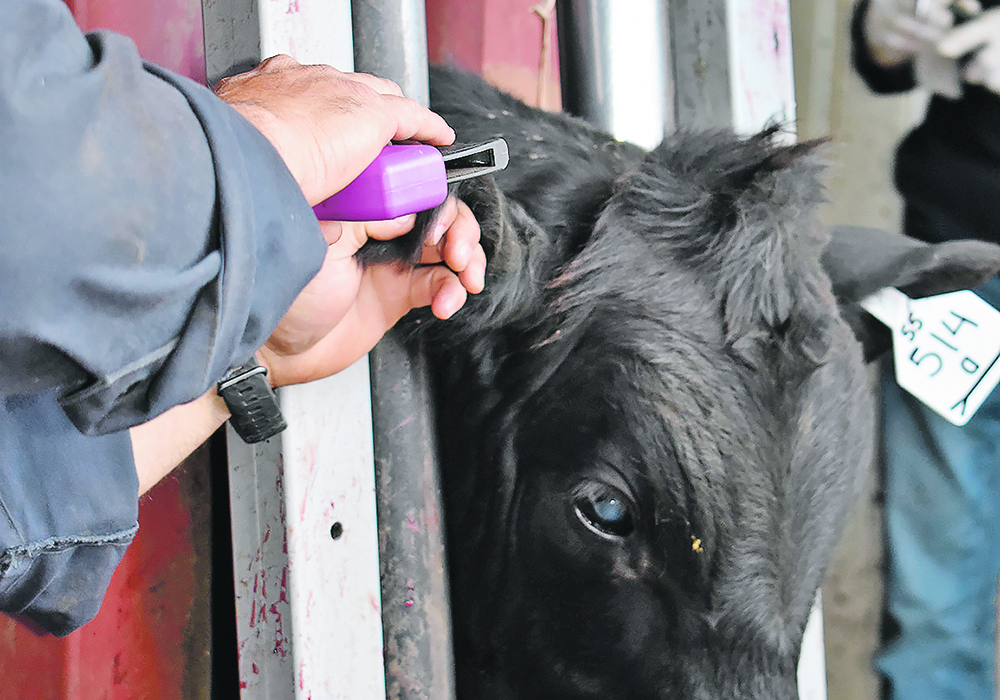Cattle producers have always been resilient and the last few years have seen many new developments.
The beef code of practice has highlighted animal care and many sections stress the need for painkillers or NSAIDs (non-steroidal anti-inflammatory drugs) for procedures such as castration, brandings or dehornings.
There are many products used to reduce pain and they have been largely adopted by cattle producers. There are now NSAIDs that can be given as injections or orally and a new one has been released that has pour-on application.
Read Also

Beef check-off collection system aligns across the country
A single and aligned check-off collection system based on where producers live makes the system equal said Chad Ross, Saskatchewan Cattle Association chair.
There are few things we treat where NSAIDs would not be a great help. Work with your veterinarian for recommendations on when NSAIDs should be used.
I hope that marketing health claims for the sake of marketing will eventually get big organizations like A & W in trouble.
The veggie burger Beyond Beef is a perfect example. I want to call it “Beneath Beef,” but that is a topic for another day.
Implanting is carried out on 98 percent of marketed cattle. Implants return at least 20 to one in value and are necessary to maximize gains. They have been around for about 50 years. In Europe, where growth implants are banned, they market a lot of intact bulls with their own high level of hormones deemed perfectly safe.
Implants are a way of repartitioning the hormones and with zero meat withdrawal the meat is totally safe to eat.
As well, there are more hormones in many garden vegetables and they are safe to eat. The branded or no-added hormone programs are fine as long as the premiums paid to producers are high enough.
Producers will see a fair change in the use of antimicrobials because of the removal of the growth-promoting claims for these types of products.
Producers must be careful to use the right medications in the right dosages and stay away from the families of drugs that are used in human medicine.
This is not doom and gloom because management tools such as respiratory vaccinations, soft weaning, scours vaccinations, immune stimulants, better biosecurity and not mixing cattle all lead to less reliance on antibiotics.
Other conditions such as lameness, which was once treated with antimicrobials because it was thought to be foot rot, have proven otherwise, so other treatments besides antibiotics are warranted.
We as an industry can do more to market directly through things like video auctions. Good on producers to find more efficient ways to market and save on transportation costs, minimizing stress and delivering a better product.
There are even electrolyte solutions to give cattle during long hauls or those delivered to the slaughter plant and hopefully, the new transportation code will shed light on this subject.
In genomics, while there has been tremendous research and identification of specific traits, we still have much to learn. Purebred breeders are cognizant of this so we can’t start selecting for a single trait while ignoring others.
Canadian genetics are sought after worldwide and purebred producers of all the breeds are continually improving genetics to facilitate this. Producers should work with a purebred breeder, veterinarian and nutritionist to maximize production.
It seems just as the industry starts to move ahead a huge hiccup occurs. From the recent tuberculosis case in southern Alberta to the Chinese closing the border to Canadian beef because of the ractopamine in swine, all meat proteins seem to be tied together. Rest assured veterinarians have your best interests at heart.
After all, your livelihood pretty much becomes their livelihood.
In the future, I wish the Canadian Food Inspection Agency could have the ability to employ private veterinarians to help with these investigations to instill confidence in the health of the Canadian cattle industry and speed up the process when large numbers of animals need to be looked at. There will always be new emerging diseases and a rare outbreak of an old reportable disease. We need to be ever vigilant.
Sleds and carts and drones and cameras and easy calving bulls have taken a lot of the work out of calving. The new calf crop still relies on the hard-working farmers and ranchers doing their checks to maximize the survivability of each newborn. This is especially true in inclement weather.
The public has no idea how hard cattle producers work.
We need to tell our stories. I commend you on your vocation and here’s to a fruitful fall weaning time.

















